Here are some tips and advices about the different types of camouflage for wildlife photography.
Wildlife photography is not that easy when you go to get your shots into the wild. Animals are more cautious and quickly scared if they find that something is going wrong around them.
The use of camouflage aims to help wildlife photographers to get closer to animals.
Needless to say that even if these ones can’t clearly see you, they still can smell or hear you from quite a distance.
So avoid noise and perfume, face the wind when possible.
A note regarding this article: Camouflage techniques and gear, are also used by military forces and hunters. This article about camouflage, is for people doing wildlife photography, and shooting wild animals, only with a camera, not a gun.
So please note that I’m not promoting any hunting activity, I simply use sometimes the same techniques.
There is two differents ways to take photographs of wild animals, while being camouflaged.
The “approaching” technique (moving to the subject) and the use on blinds (a place where you hide, waiting for the animals to come).
I prefer to approach wildlife, rather than to wait hidden, but generally I mix both techniques.
There is pros and cons in the two techniques, but you can go for the one that fits more with the type of person you are (patient or not), and/or the type of pictures you want to take.
Personnaly I prefer the approaching technique, as I like to hike and walk like a ninja in the woods ^^, and then “rest” while hiding and waiting
Here are some photographs of camouflage that I use for my wildlife photography sessions:
Thank you to my dad and my friend Adam, who occasionally joined me, and allowed me to use their pictures.
I took some pictures of myself to see how the camouflage or, hide, look in nature, because I’m not a fan of selfies…
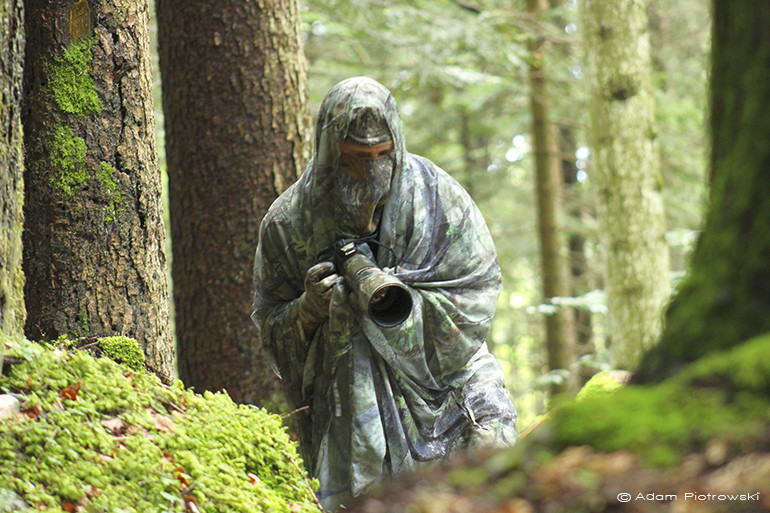
F4.5, 1/100 sec, 130 mm, ISO1600, Canon EOS 1200D
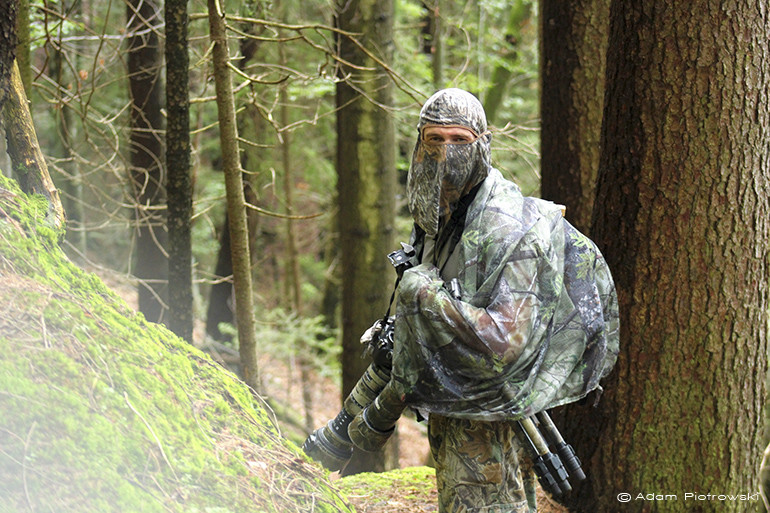
F4, 1/100 sec, 75 mm, ISO1600, Canon EOS 1200D
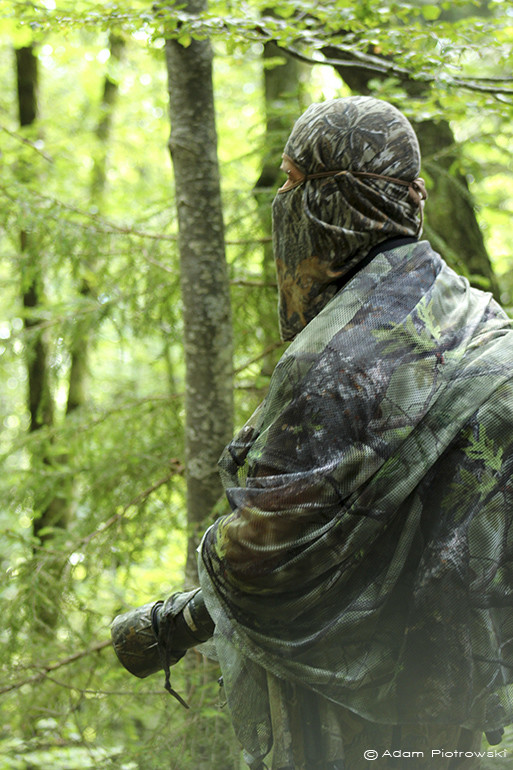
F4, 1/30 sec, 75 mm, ISO400, Canon EOS 1200D
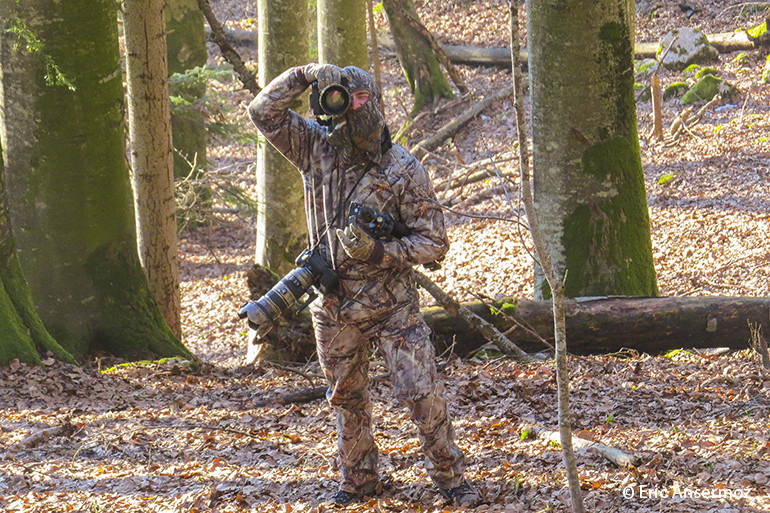
F5.6, 1/100 sec, 47.072 mm, ISO500, Canon PowerShot SX50 HS
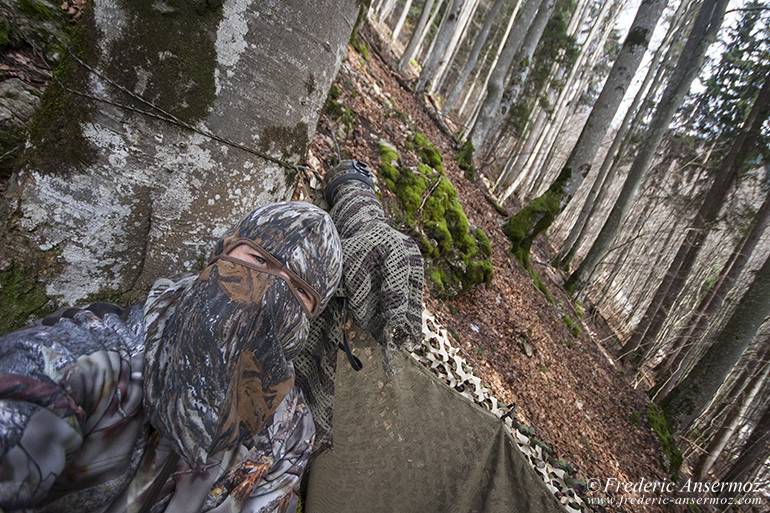
F4, 1/320 sec, 10 mm, ISO800, Canon EOS 400D DIGITAL
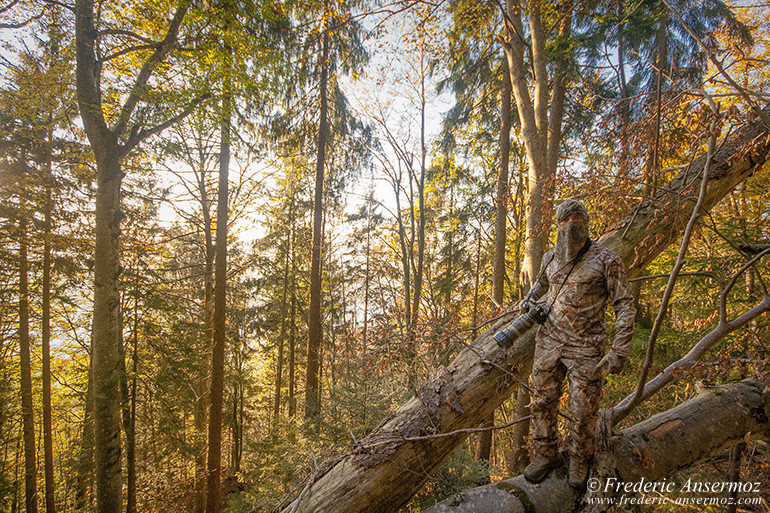
F5.6, 1/50 sec, 10 mm, ISO800, Canon EOS 400D DIGITAL
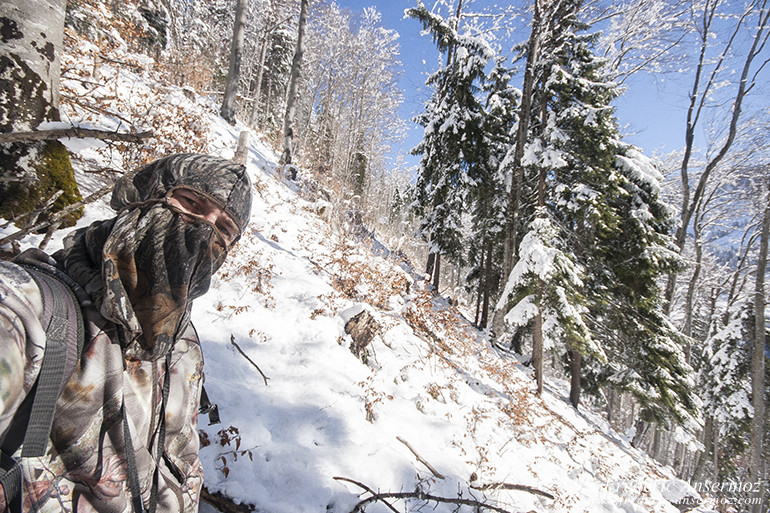
F8, 1/250 sec, 10 mm, ISO200, Canon EOS 400D DIGITAL
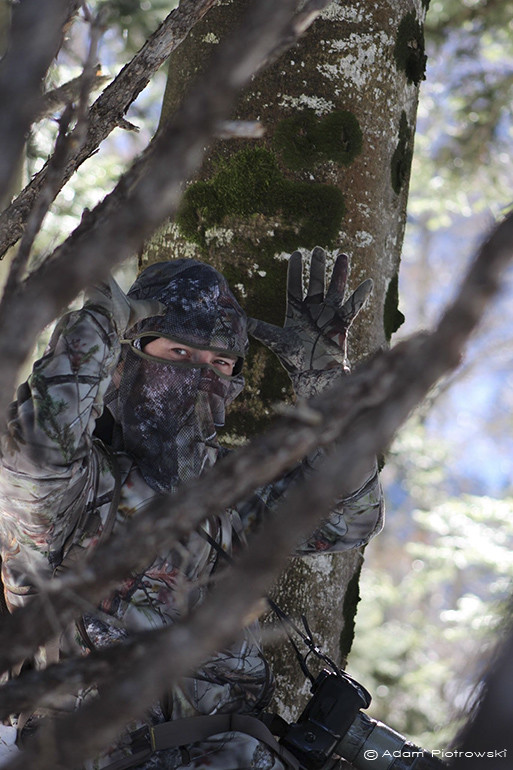
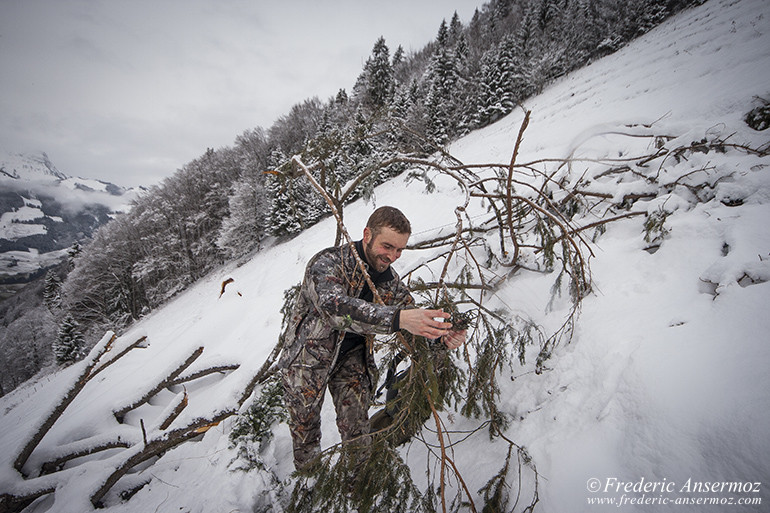
F8, 1/250 sec, 12 mm, ISO400, Canon EOS 400D DIGITAL
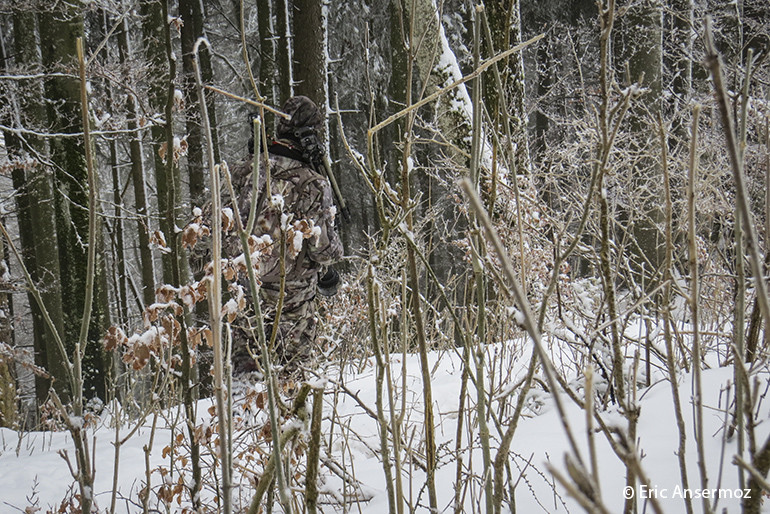
F5, 1/100 sec, 16.164 mm, ISO160, Canon PowerShot SX50 HS
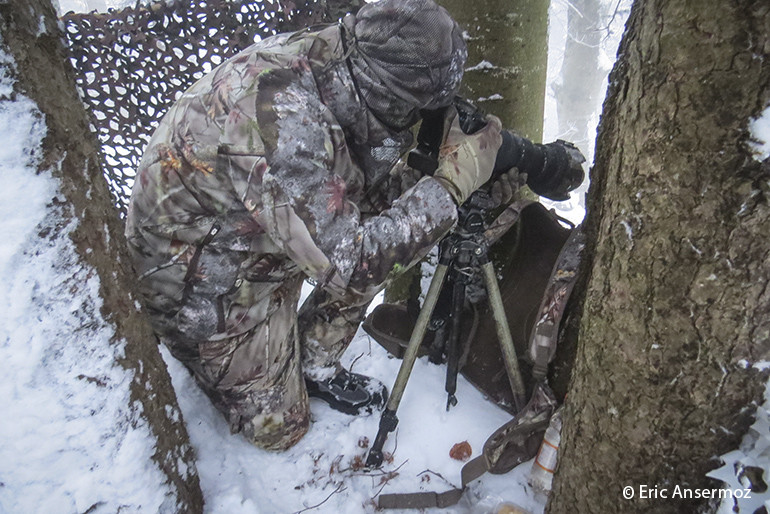
F3.4, 1/20 sec, 4.3 mm, ISO1600, Canon PowerShot SX50 HS
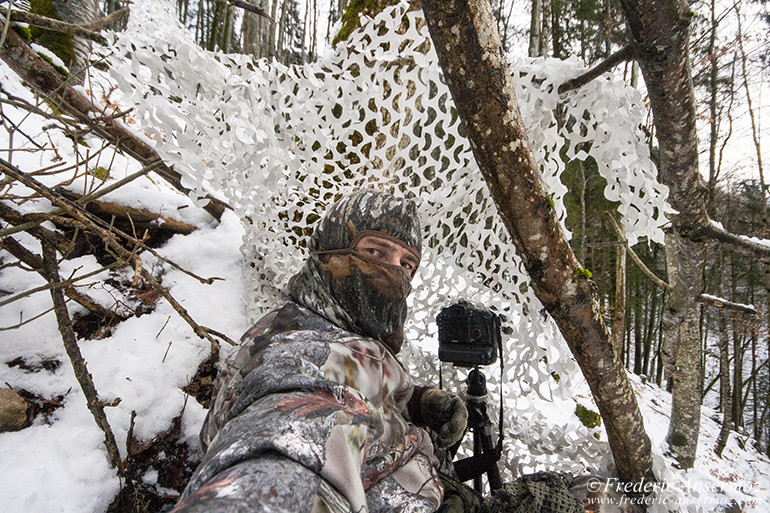
F8, 1/320 sec, 10 mm, ISO800, Canon EOS 400D DIGITAL
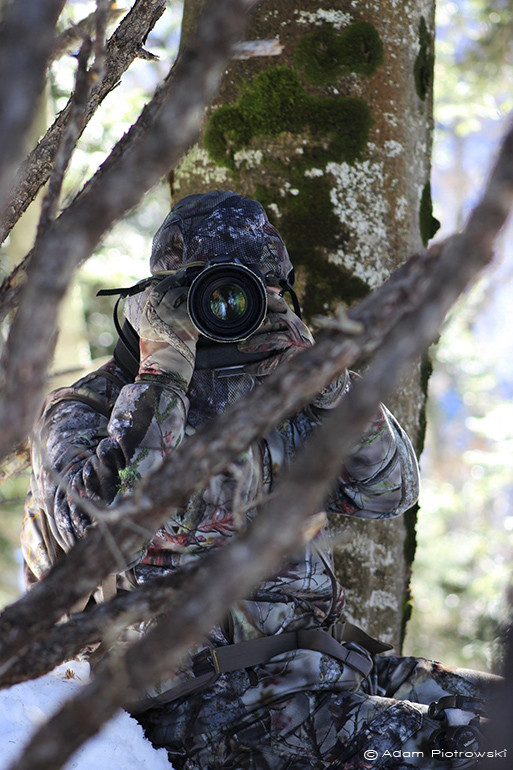
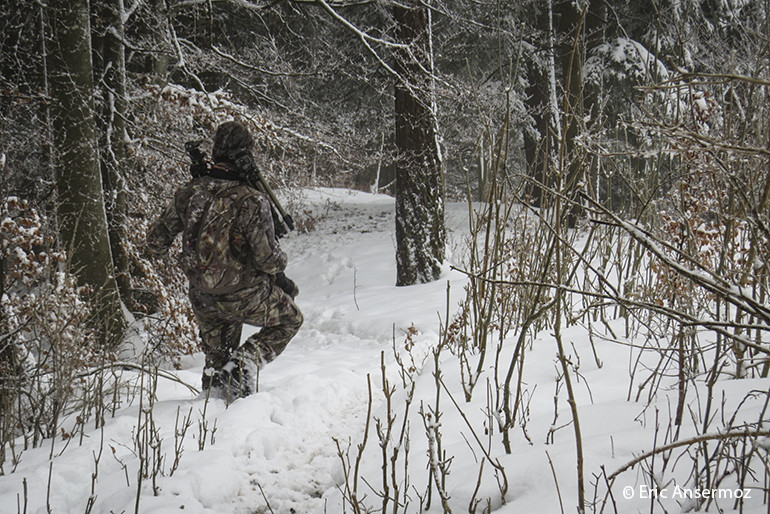
F5, 1/100 sec, 16.164 mm, ISO80, Canon PowerShot SX50 HS
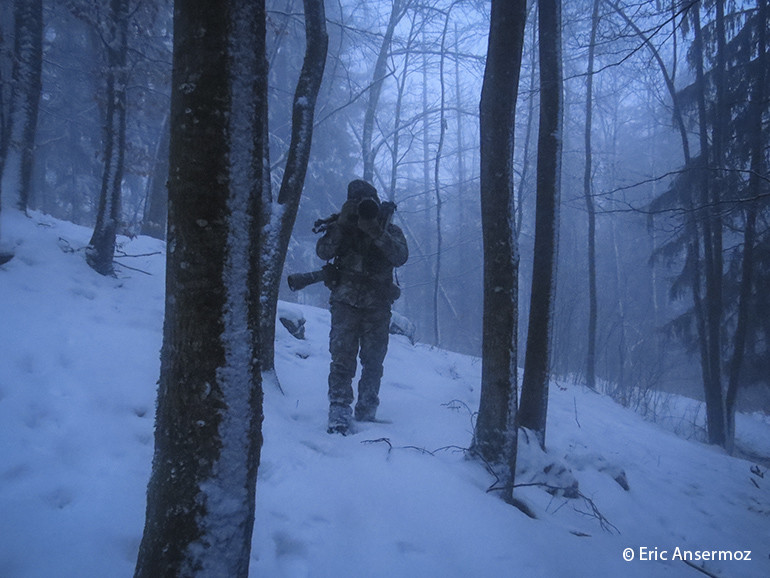
F3.5, 1/10 sec, 5.332 mm, ISO1600, Canon PowerShot SX50 HS
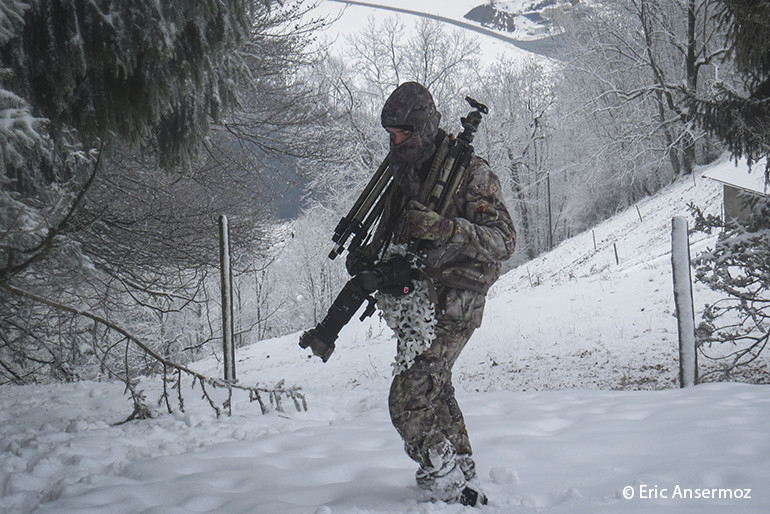
F5, 1/200 sec, 22.944 mm, ISO80, Canon PowerShot SX50 HS
I mainly use suits that look like Realtree camo gear (less expensive are the camouflage clothes from Decathlon, Solognac). I find them light and handy. The efficiency depends on the way you act in the woods.
After several days of shooting in the wild, you will get used to your equipment, and be able to make the most of it.
I try to cover and camouflage every parts of myself, from head to toes, walk slowly and silently.
If you prefer to hide and wait, you can combine more basic camouflage clothes, with some nets or a tarp that can match the natural foliage from the surroundings. Almost like in stealth camping.
The goal is to blend in with the landscape.
Some Equipment like the Tragopan photography blinds can be nice options.
Another option, that I haven’t tried yet, is the use of a ghillie suit. Basically, with a ghillie suit, you will look like a walking bush.
I was really interested in trying one, but apparently, it’s heavy, hot and not super handy.
Maybe it’s a bit more suitable for cold seasons (Winter and Autumn), and/or flatter grounds, such as forests, swamps etc., rather than inclined mountains during summer, when you hike for hours to reach your spot.
The ghillie suit was developed by Scottish gamekeepers as a portable hunting blind. The ghillie suit is also called a yowie suit by the Australian Army.
They can be expensive, but you can make your own.
Update August 2015:
I finally gave a try to a ghillie suit recently.
I haven’t had a chance to test it massively yet, but, despite the fact that it’s really hot indeed and it collects branches for you all along, it’s good camouflage gear.
Here are some pictures of my ghillie suit.
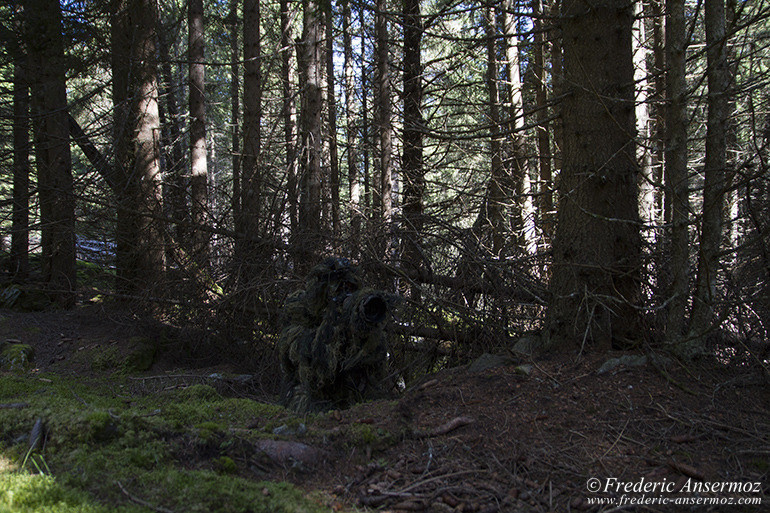
F2.8, 1/400 sec, 17 mm, ISO320, Canon EOS 7D
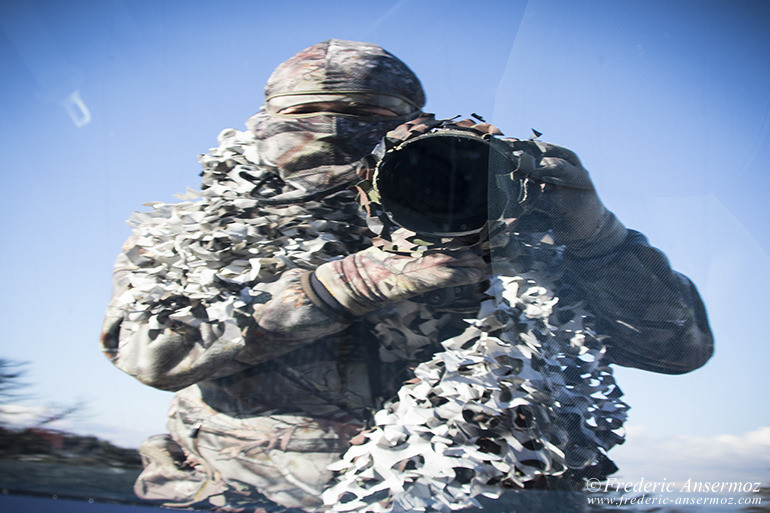
F6.3, 1/50 sec, 50 mm, ISO400, Canon EOS 7D Mark II
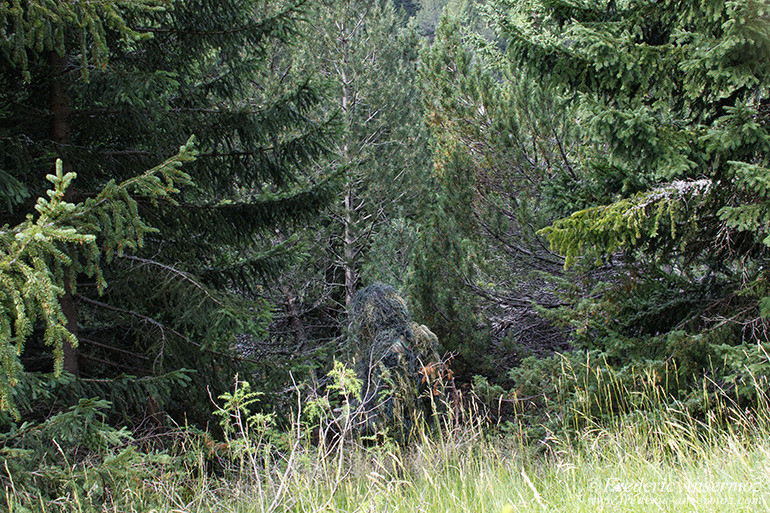
F7.1, 1/640 sec, 50 mm, ISO1600, Canon EOS 7D Mark II
End of update.
Whatever you will choose as a camouflage solution for wildlife photography, the main part is to take something that can blend in with the area you are going to reach, and conceal you from wild animals.
Slowly, you will be able to take better photos and from a closer distance!
Remember to be safe when you try to approach wildlife. There are minimum security distances to respect, in order to avoid to put yourself in danger and disturb animals.
Take care, take pictures, respect nature and stay safe!
